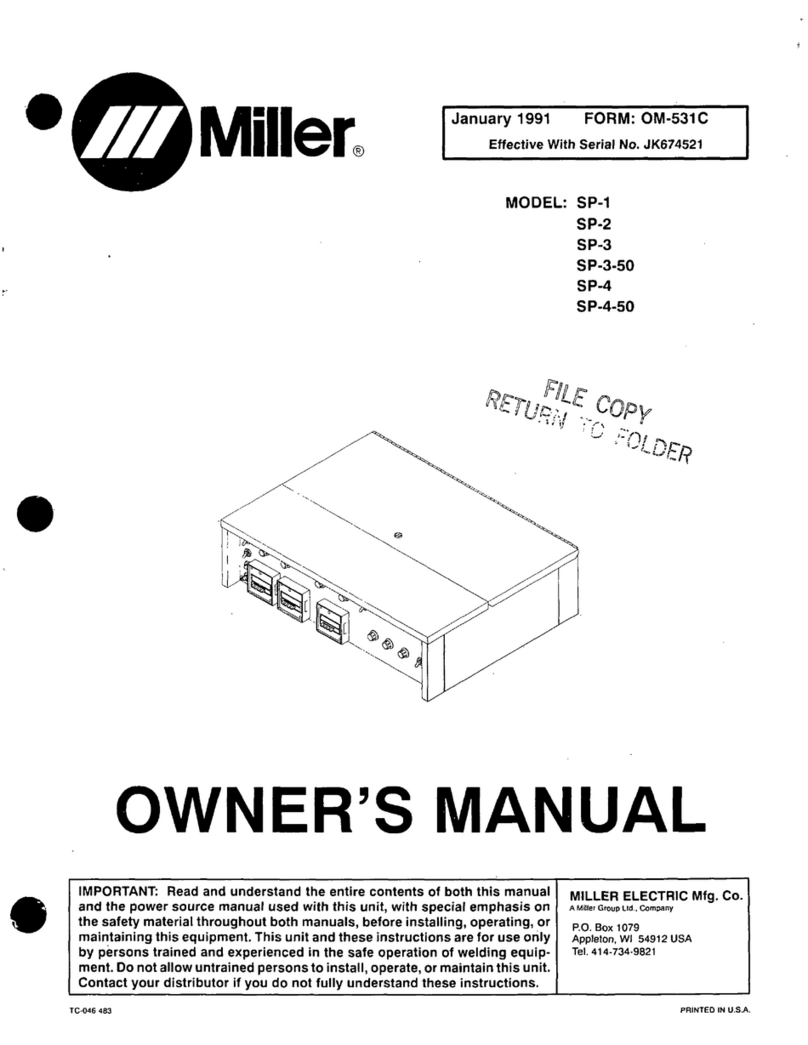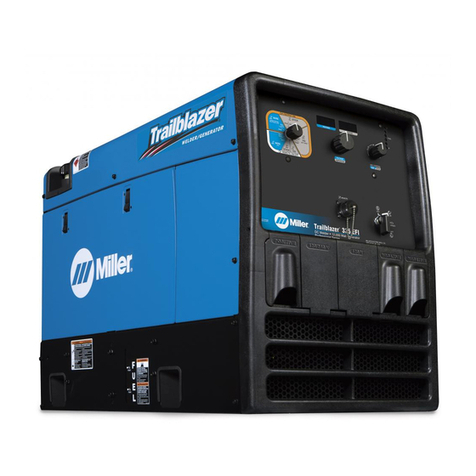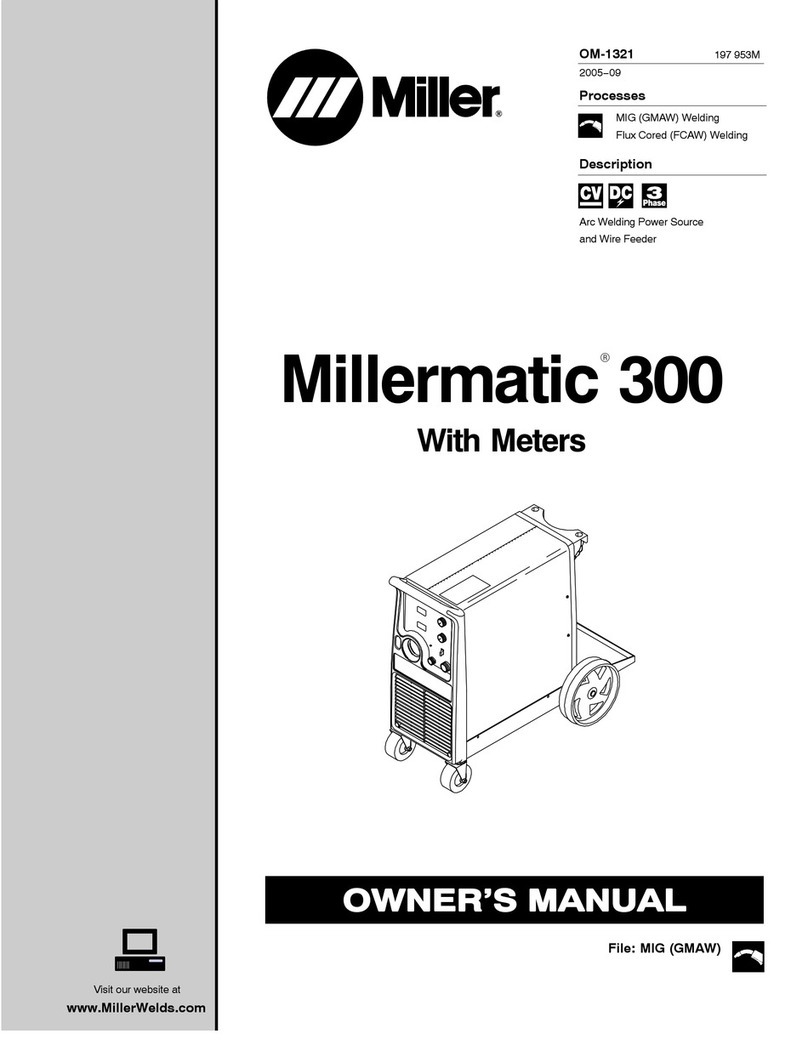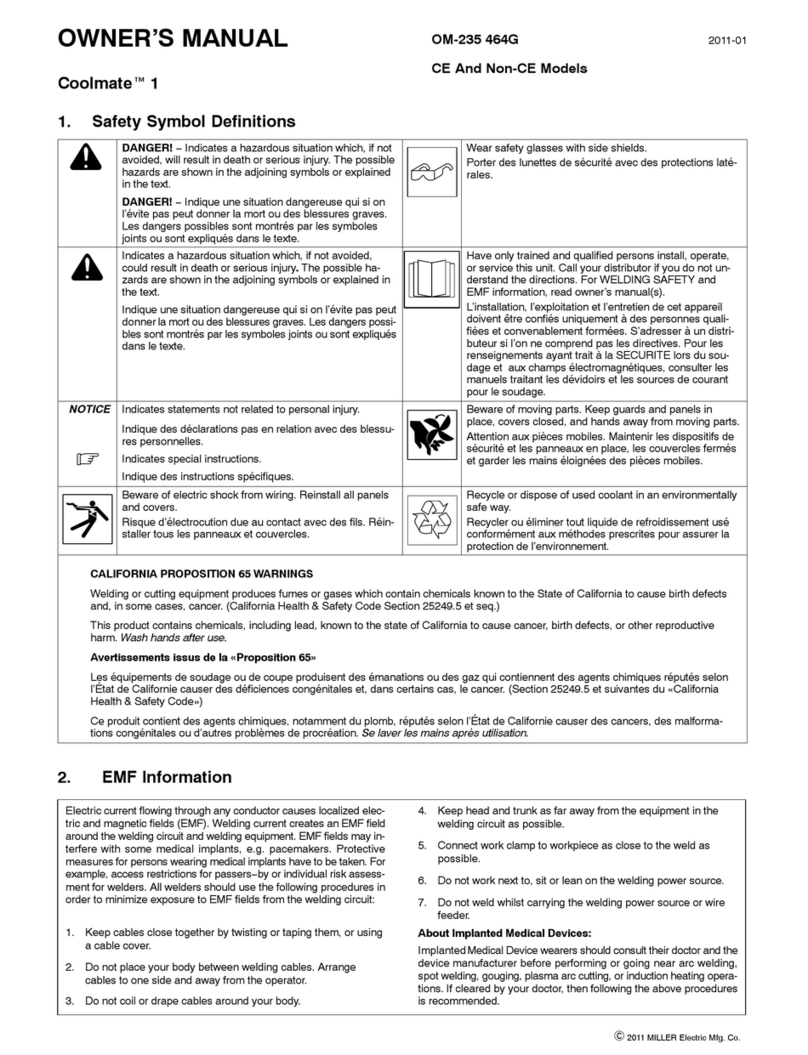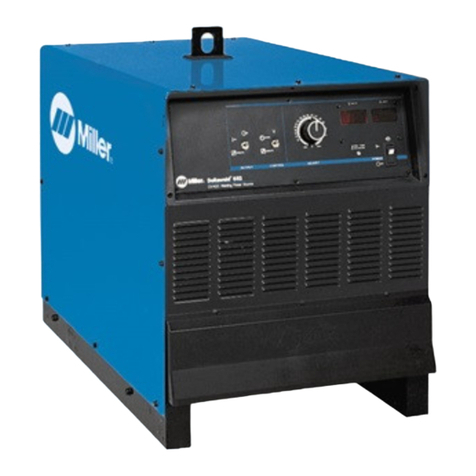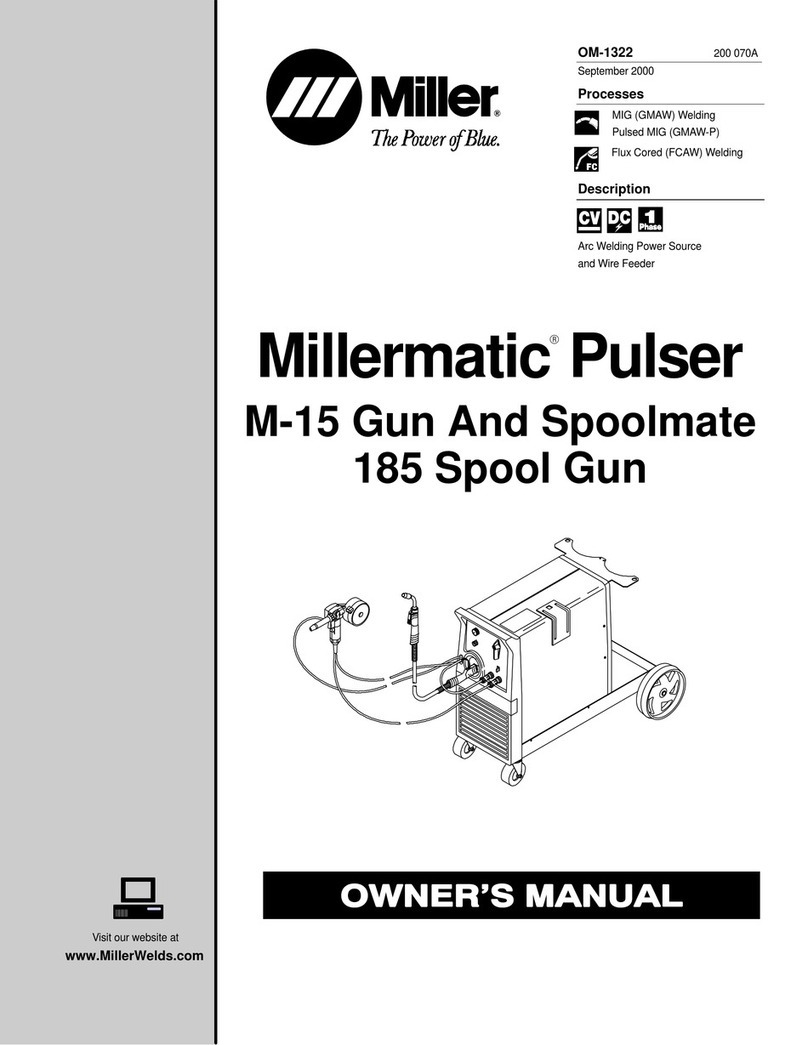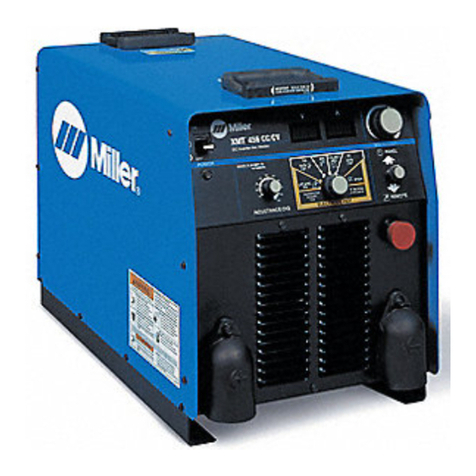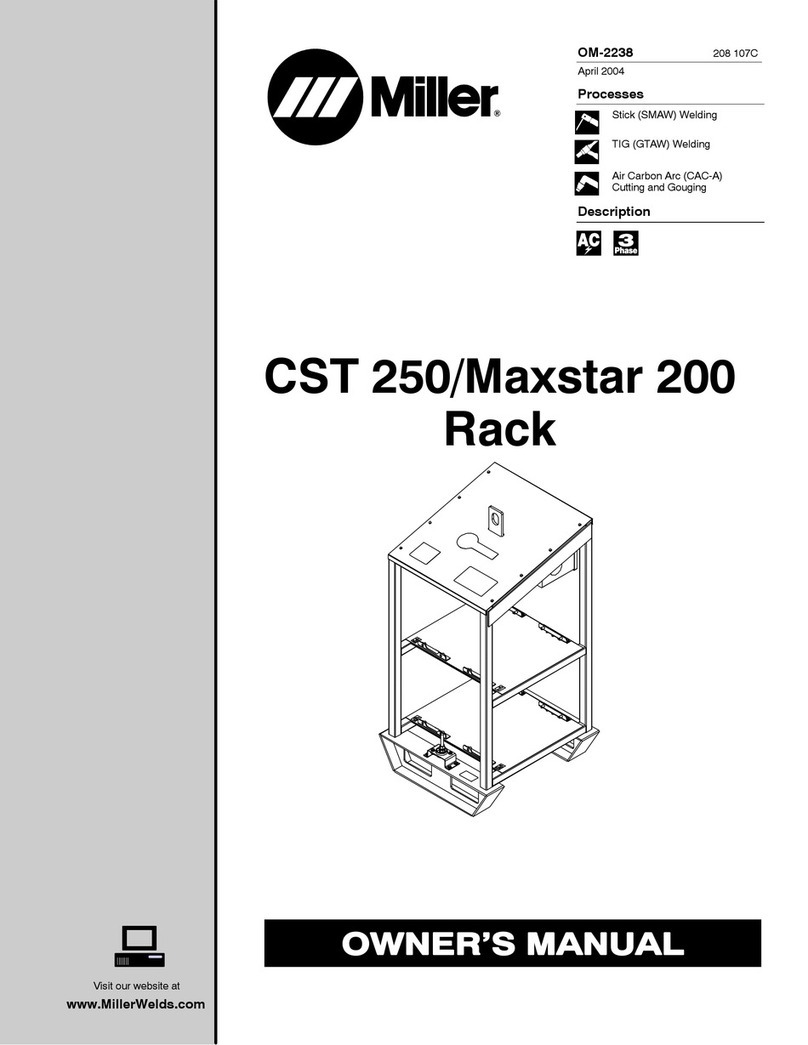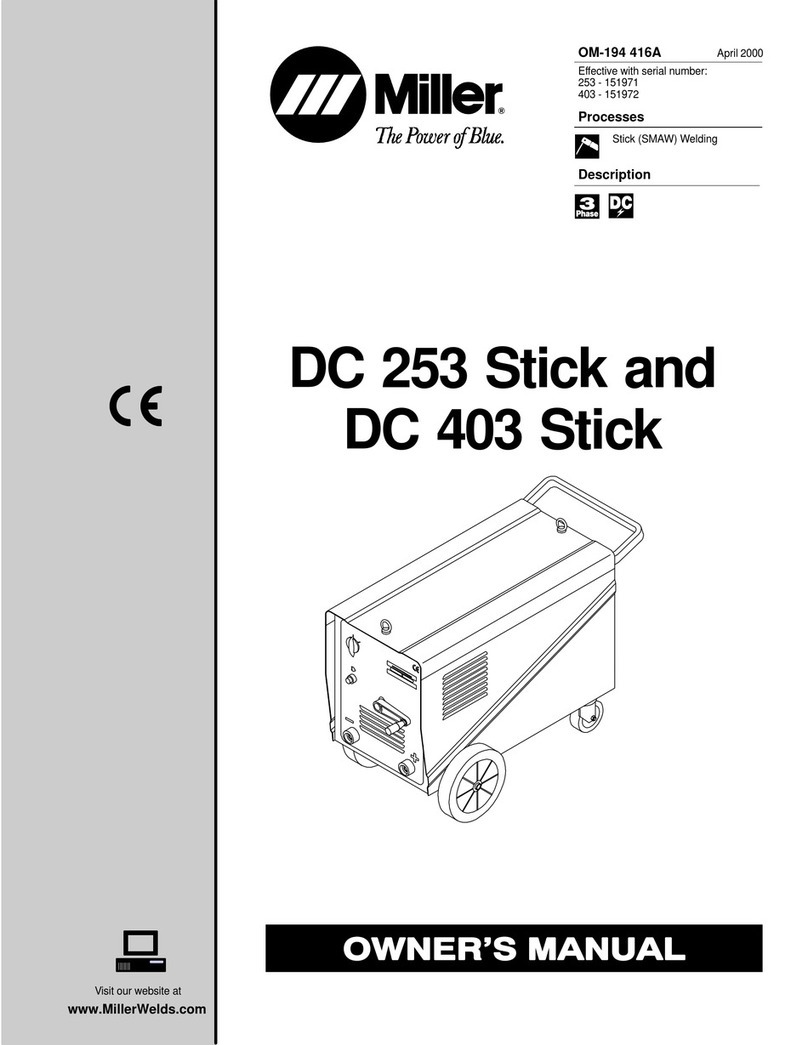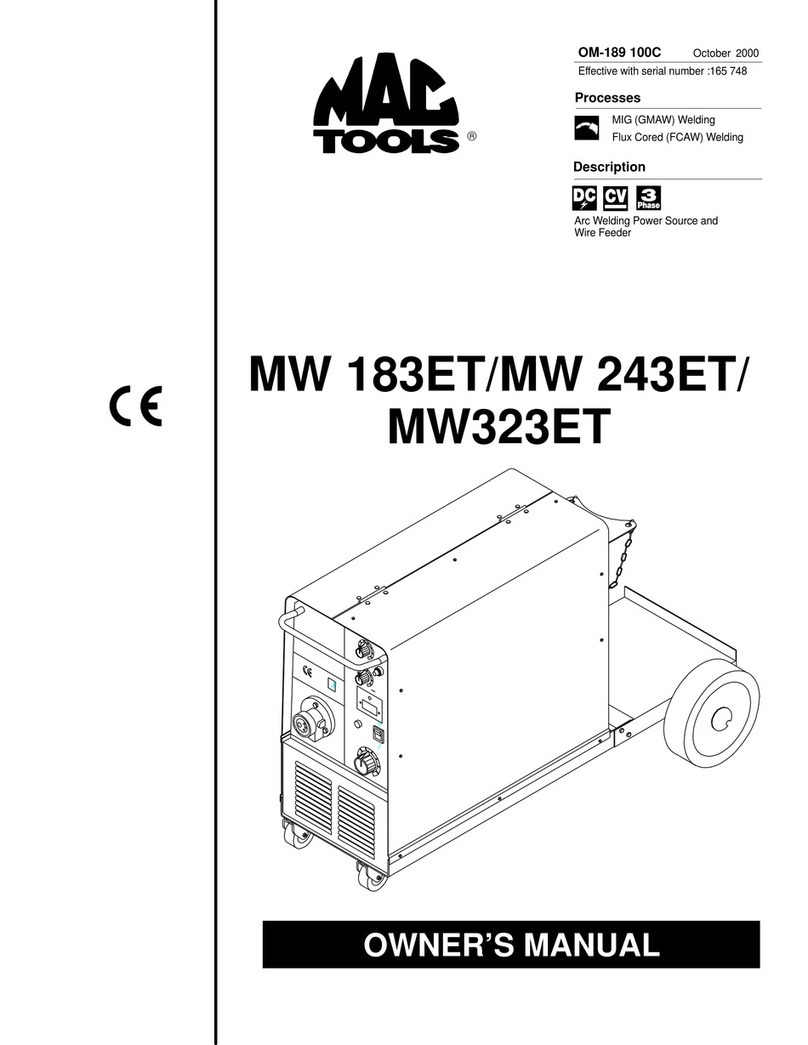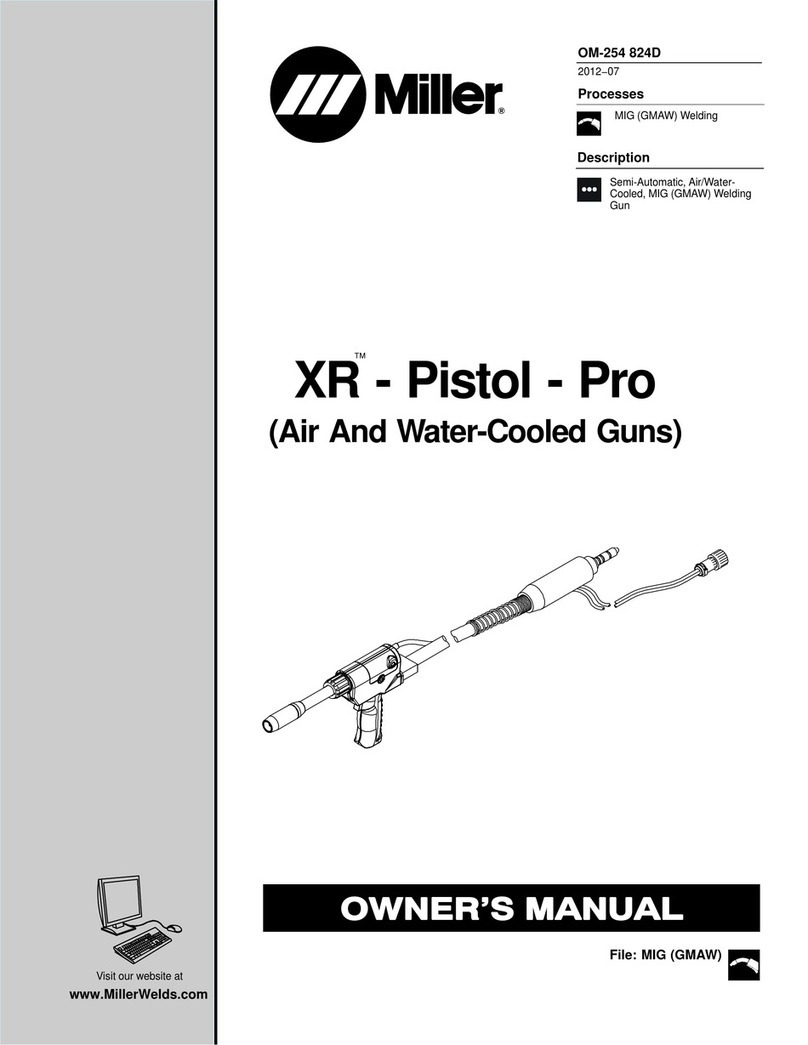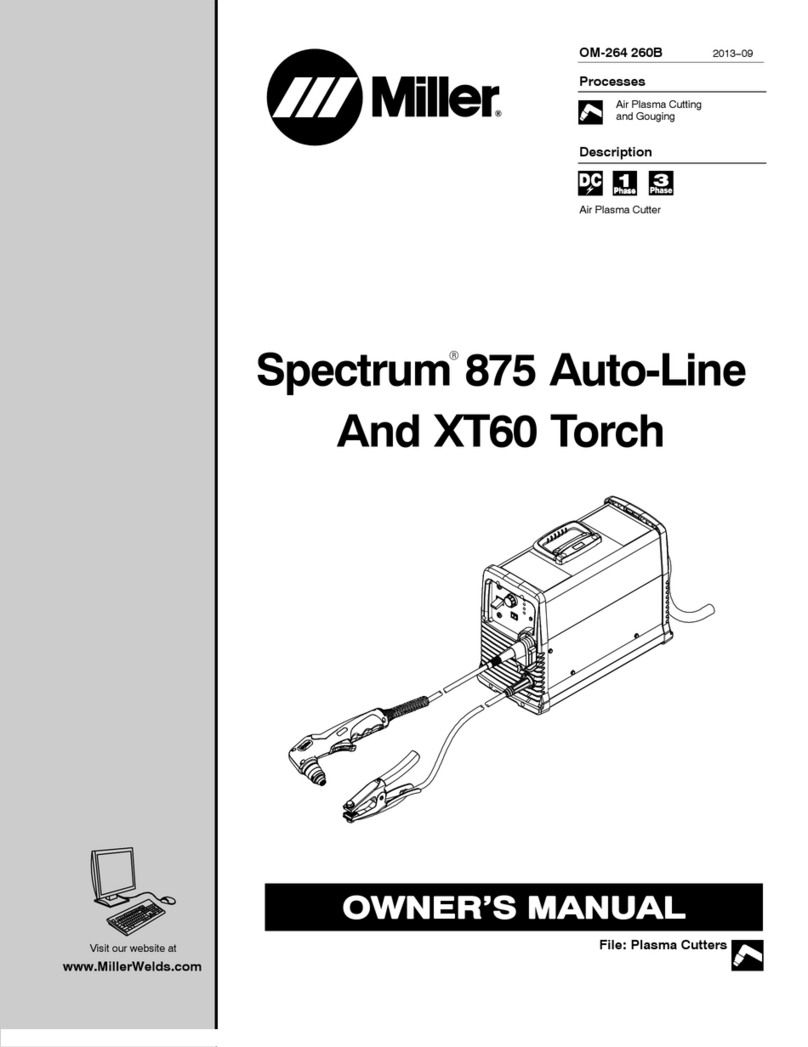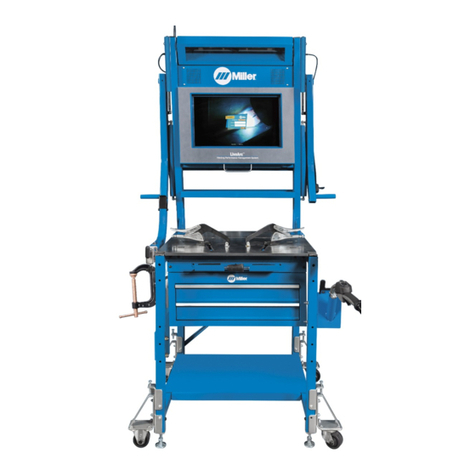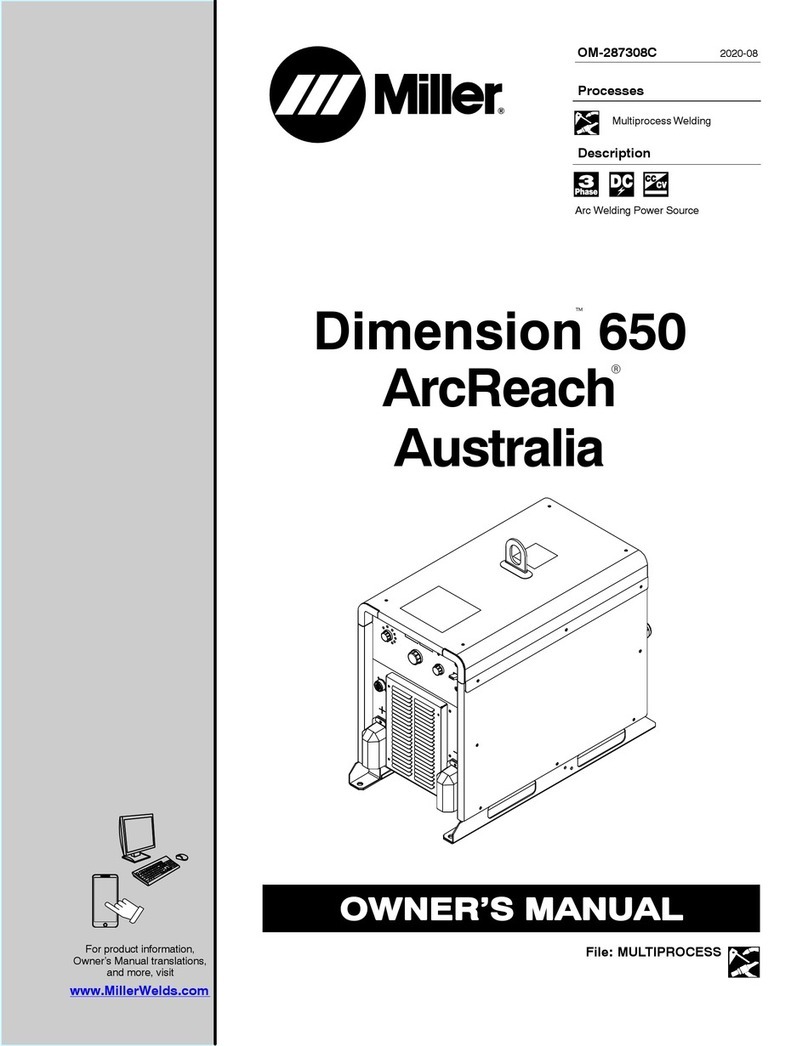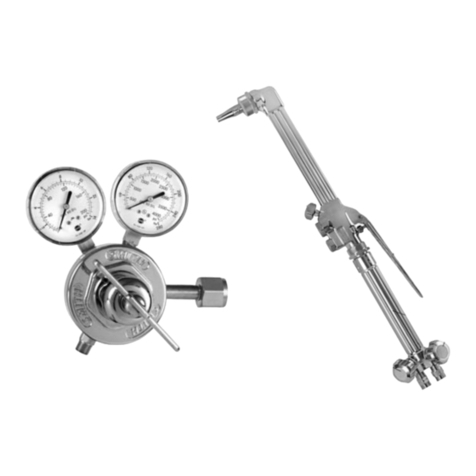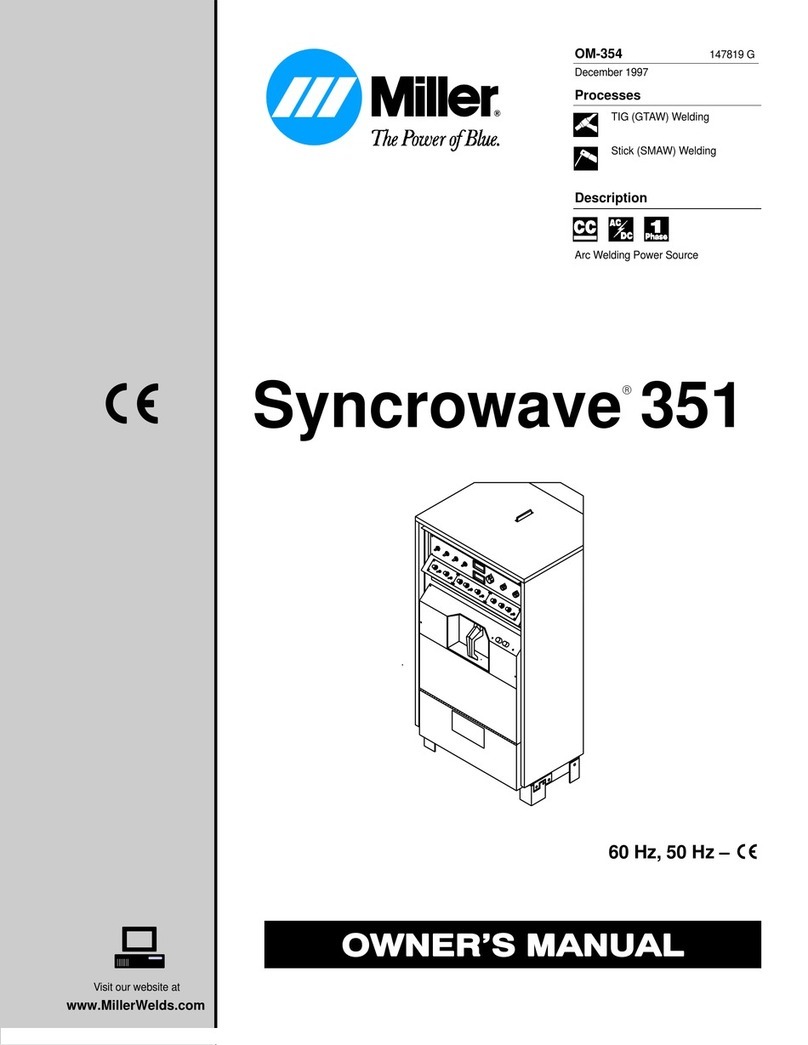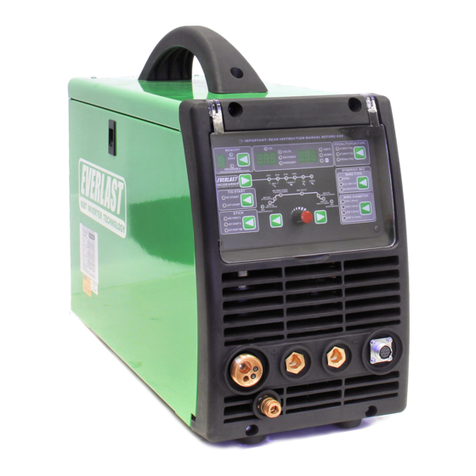AC Waveshape Controls
AC Waveshape Options
Setting Arc Effect Weld EffectFeature
Default: Soft Squarewave AC Wave Options and Benefits: See Owner’s Manual for instructions.
AC Balance
Controls arc cleaning action.
Adjusting the value controls
the width of the cleaning zone
surrounding the weld.
Tip: Adjust the AC Balance
for desired oxide cleaning.
The weld pool should be shiny
and clear with no visible oxide
specs or peppering.
AC Frequency
Controls arc cone width.
Increasing the AC Frequency
provides a more focused
arc with increased
directional control.
Tip: Increase the AC
Frequency to improve arc
focus and stability.
Independent AC
Amperage
350 and 700 models only.
Allows the EN and EP
amperage values to be set
independently for further
control of the weld profile
and arc cleaning action.
Tip: Begin with a ratio of
1:1 for most applications and
adjust the EN or EP based on
the desired weld results.
100A EP
200A EN
200A EP
100A EN
50%
75%
60 Hz
120 Hz
Increases electrode
balling action
Reduces balling,
helps maintain
point of electrode
Wider, soft arc ideal
for build-up
Wider bead and
cleaning action
Shallow
penetration
Deep, narrow
penetration
Advanced Squarewave: Travel Faster
Soft Squarewave: Max Puddle Control
Sine Wave: Traditional Arc
Triangle Wave: Reduced Heat Input
More current in EN
than EP: Deeper
penetration, faster
travel, reduced
balling action
More current in EP
than EN: Shallow
penetration,
increased
balling and
cleaning
action
Cleaning Bead
Cleaning
Bead
Wider bead and
cleaning action
Narrow bead with
reduced cleaning
Bead
Narrow bead, with
no visible cleaning
No Visible Cleaning Bead
Wider bead and
cleaning action
Narrow, focused arc
ideal for fillet and
inside corners
Narrower bead and
cleaning action
Tip: Soft Squarewave is recommended
for most applications. It provides good
puddle control and arc stability.
Tungsten Selection and Prep
Tungsten Type Application Notes
Diameter Amp Range
Good all-around tungsten for
both AC and DC welding.
Excellent low amp starts for
AC and DC welding.
Commonly used for DC welding,
not ideal for AC.
PURE TUNGSTEN (green) is NOT recommended!
For best results in most applications use a sharpened
cerium or lanthanum electrode for AC and DC welding.
See owner’s manual
for more information.
2% Thorium
2% Cerium
1.5–2% Lanthanum
0.020"
0.040"
1/16"
3/32"
1/8"
5/32"
3/16"
1/4"
5–20
10–80
10–150
60–250
100–400
160–500
190–750
325–1100
Pulsed TIG Controls
Parameter Control Panel Abbreviation
Adjustment
Tungsten Preparation: Sharpen tungsten for AC and DC welding with the Dynasty.
Low-Speed Pulse High-Speed Pulse
Tip: Blunting the tip of the electrode is sometimes done to help maintain consistent geometry and resist
tungsten erosion. This is especially helpful in AC when melt-back of the tungsten electrode is common.
Note: Do not use wheel for other jobs or tungsten can become contaminated.
Ideal Preparation —Stable Arc
CORRECT INCORRECT IDEAL GRIND ANGLE RANGE
AC EFFECT
Wrong Preparation —Wandering Arc
Grinding
Wheel
Stable Arc
Blunt Tip
Straight Ground Radial Ground 15˚ to 30˚
Slight meltback
of electrode tip
Pointed Tip
Arc Wander
Grinding
Wheel
The Pulsed TIG function switches the amperage from a high (peak) to a low (background) at a set rate (PPS).
Pulsing can reduce heat input by lowering the average amperage, increasing control of the weld puddle,
penetration and distortion. The following parameters can be adjusted for desired results:
Tip: Begin welding at factory default settings of 100PPS, 40% peak and 25% background amps.
Adjust the frequency (PPS) to change width and appearance, fine tune with peak and background.
PPS
Peak t
BKGND A
Pulses Per Second
Peak Time
Background Amps
Rate of pulsing between high and low
% of pulse cycle at peak amps
% of peak amperage
248988A©2010 Miller Electric Mfg. Co., An Illinois Tool Works Company
1 to 10 pulses per second (PPS) will produce a
distinct ripple pattern in the weld bead. Can be
used to time filler addition, reduce distortion and
improve control.
100 pulses per second (PPS) and higher helps to
focus the arc for increased stability, penetration and
travel speed. Increased puddle agitation improves
weld microstructure.
Distinct ripple pattern Narrow bead and HAZ
Focused arc increases travel speed
and penetration
Cleaning
